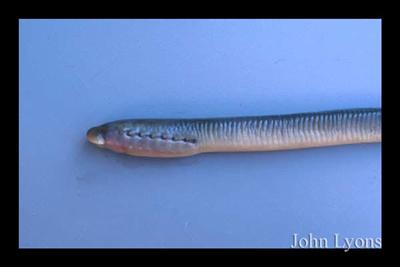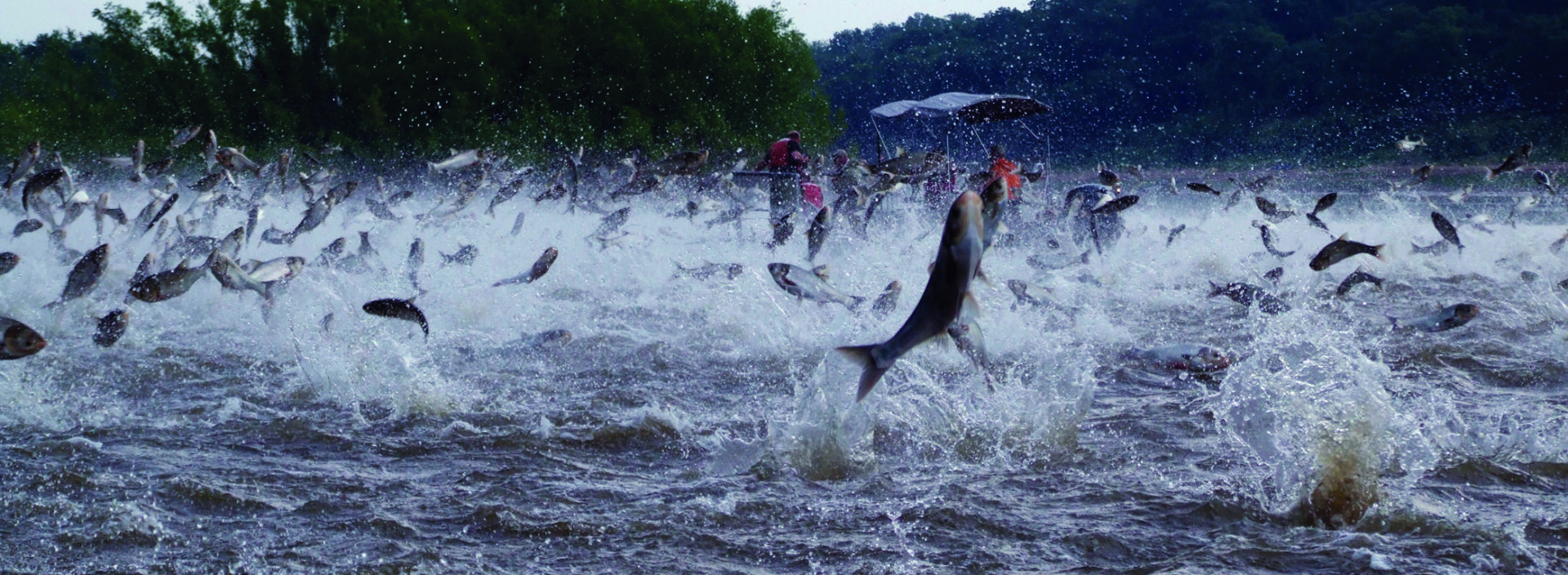What is a sea lamprey?
- Sea lampreys are parasitic fish (in their adult form) that attach to other fish using their sucking disk. They rasp through the victim’s scales and skin, and then feed on its body fluids.
- Lampreys are members of a family of ancient fishes that were around before the time of the dinosaurs.
- Young lamprey (larvae) are small, slender creatures which feed on bottom debris and algae. This stage lasts 4-6 years.
- Adult sea lampreys are 12-24 inches long and feed entirely on other fish.

Similar species
- There are several different types of native lampreys (the silver lamprey, the American brook lamprey, the chestnut lamprey, and the northern brook lamprey). These native species do not deplete fish populations or cause the problems that sea lamprey do.
- Another look-alike is the freshwater eel, which is also native to the Great Lakes. Eels have jaws, and lampreys do not.
Where did the sea lamprey come from?
- Sea lampreys are native to the Atlantic Ocean and first entered the Great Lakes through locks and shipping canals in the 1880s.
- They were first found in Lake Ontario in 1835, Lake Erie in 1921, Lake Huron in 1932, Lake Michigan in 1936 and Lake Superior in 1946.
Why is it a problem?
- As with many invasive species, the sea lamprey entered the Great Lakes and found no natural predators, competitors, parasites or pathogens — no natural population controls.
- The top predators of the existing food web, like lake trout, were particularly susceptible to sea lamprey predation.
How do we control the sea lamprey?
- The Great Lakes Fishery Commission works with Fisheries and Oceans Canada, the U.S. Fish and Wildlife Service and the U.S. Army Corps of Engineers to control lamprey in the Great Lakes.
- There are several methods in use to control lamprey populations. The main method is the application of a pesticide called TFM that kills lamprey larvae. Although it is successful, it is also expensive.
- Another method is the use of barriers. Many different types of barriers are in use and under development — including velocity barriers, electrical barriers and adjustable crest barriers.
- Other methods of lamprey control include releasing sterile male lampreys that compete with the fertile males and therefore lower the overall reproduction rate in a particular area.


